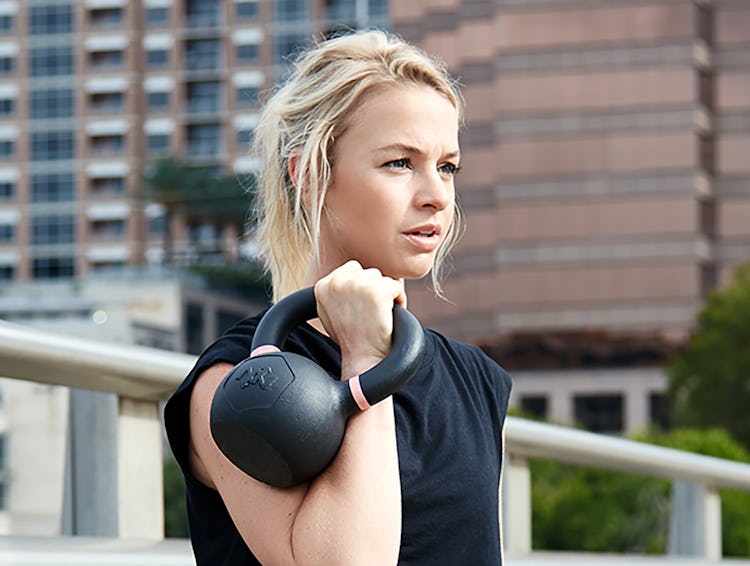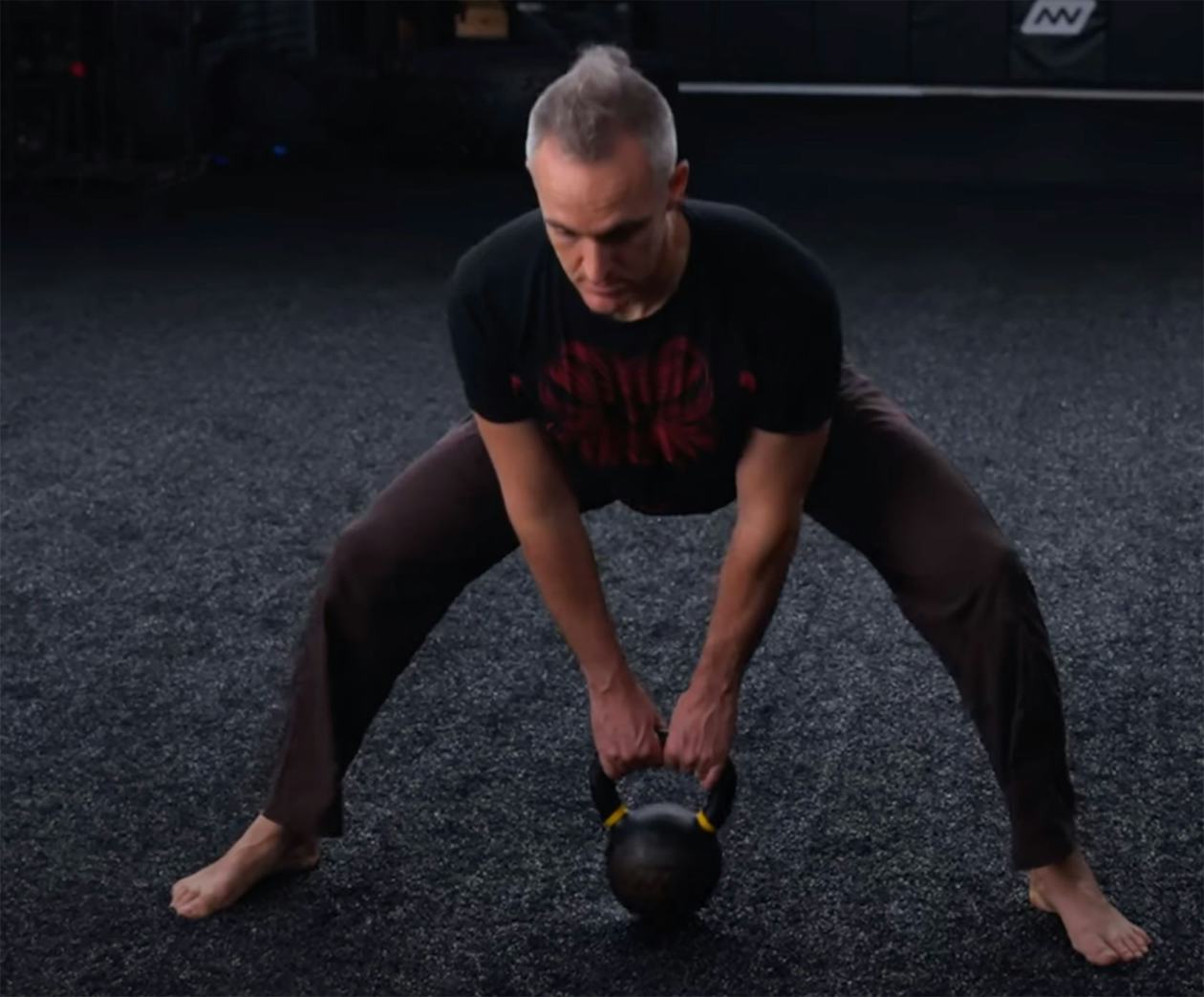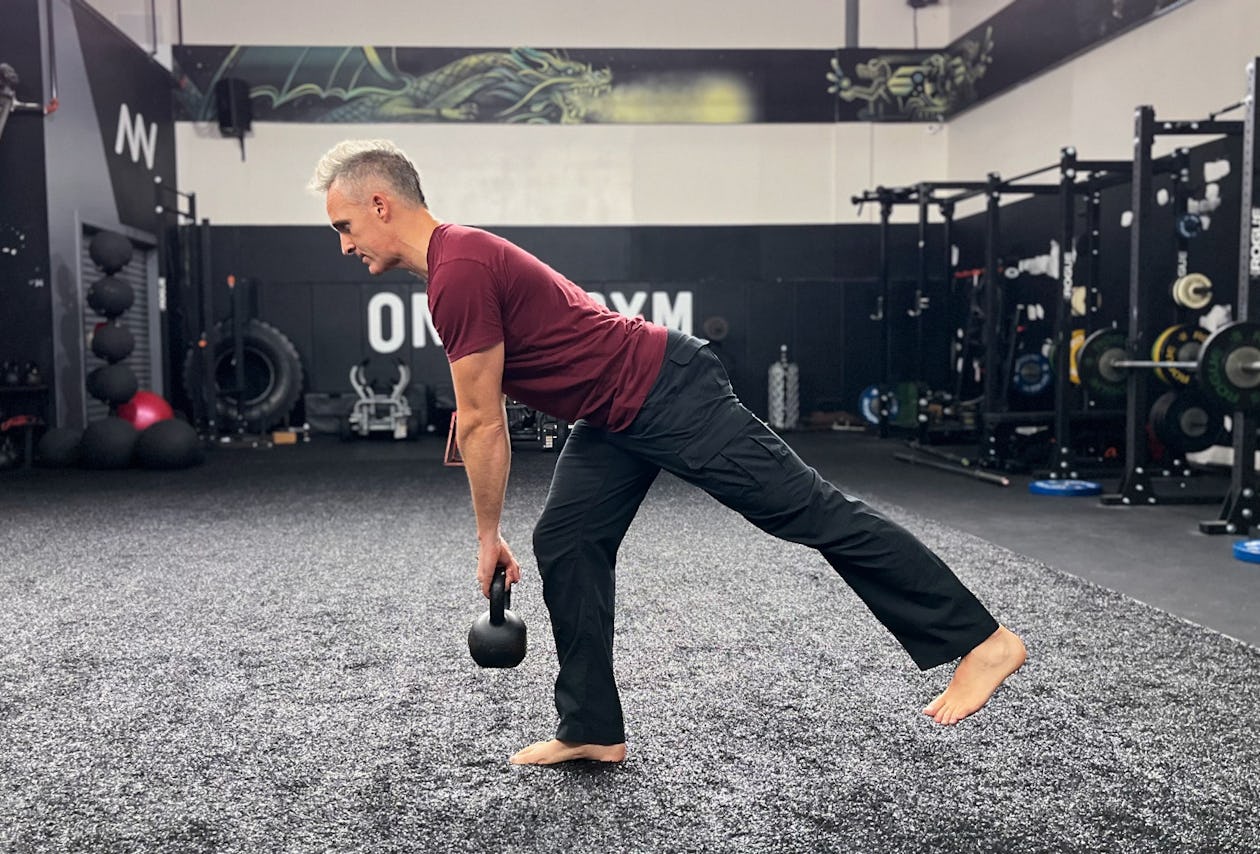We’re willing to bet that most people get interested in the kettlebell for one reason: it looks damn cool.
A black cannonball with a cast-iron handle, no other training tool can match its old-school, back-to-basics appeal.
And while the cool factor is a good enough reason to start using one, there are many others that will inspire you to stick with kettlebell training long-term and make it a regular part of your workouts.
Whether you’re looking to get started with your first bell tomorrow, or you want a quick refresher course on everything that makes kettlebells indispensable, look no further than the guide that follows, which covers everything you need to know to start making gains right away.
The History of Kettlebells
Part of the kettlebell’s mystique lies in its humble origins. Kettlebells debuted in 18th-century Russia, where they were used as counterweights to measure grain and other dry goods.
It wasn’t long before farmers started challenging each other to lift the heaviest ones, and kettlebells eventually found their way into the hands of circus strongmen.
After World War II, the Soviet Red Army adopted kettlebells as a means of training its soldiers, and in the 1970s, kettlebell lifting had grown to become the official sport of the Soviet Union.
While kettlebells have been available in the United States since the 1940s, they’ve enjoyed a resurgence in popularity since the turn of the century and are now widely available in gyms and for sale online and in stores.
Anatomy Of A Kettlebell
The kettlebell comprises a bell, handle, and “horns.” The bell itself is the round, cannon-ball shaped weight. The handle connects to the kettlebell by sloping downward at each end, called the horns.
This design is what makes kettlebells unique. Unlike a dumbbell, in which a handle connects two evenly-weighted bells and lies level in the center between them, a kettlebell’s center of gravity is offset from its handle—it rests several inches away.
The kettlebell can be grasped by the handle, horns, or its bell end. Gripping the kettlebell by its handle will be your mainstay, but exercises like the goblet squat are more user-friendly if you grasp the horns to do it.
The Benefits of Kettlebell Training
Better Form
The main thing that distinguishes the kettlebell from its dumbbell cousin is the off-set nature of the load. A kettlebell’s center of gravity lies six to eight inches away from your grip (when gripping the handle, anyway), and that makes it harder to control.
As a result, practically any exercise you do with it—from conventional strength movements like presses and squats to more unique kettlebell exercises like swings and snatches—is going to require stricter form and more muscle activation than you could get away with using a dumbbell.
Consider an overhead press for example. “It’s funny how, with barbells and dumbbells, so many people are happy to press to where their elbows are bent 90 degrees,” says Shane Heins, Director of Fitness Education for the Onnit Academy. “But with the kettlebell, everybody instinctively wants to press up to lockout, because the off-set load acts as a counter-weight, pulling their shoulder back.”
In other words, the kettlebell encourages you to do the exercise perfectly. And if you can’t—say, you arch your back or twist to one side in an effort to complete the lift—you know immediately when your form has broken (or if you don’t, a skilled trainer or training partner who’s watching you will).
Another example: squatting with the kettlebell held in front of your body forces you to sit back more on the descent, improving the mechanics of your squat pattern.
Improving your form paves the way for you to perform more advanced (and arguably more glamorous) exercises properly when you graduate to them—such as a heavy barbell back squat, or kettlebell flows.
Core Strength
As stated above, pressing a kettlebell overhead will create the tendency to flare your ribs or lean back, so you have to lock your core in that much more to prevent it.
In a swing, you have to brace your core to prevent your lower back from rounding dangerously at the bottom of the movement. On any exercise you do, you can count on your core having to fire harder to stabilize your body and ensure safety—it’s not optional, as it can be with other free weights or machines.
Grip Strength
A kettlebell’s handle is thicker than that of a dumbbell, and that requires your fingers, hands, and forearms to work harder to hold on. Coupled with the displaced load and the dynamic nature of many kettlebell movements, your gripping muscles will get a tough workout without your even thinking about it, or adding any extra work in to train them.
Athleticism
Kettlebell exercises often have you moving in different planes of motion, and many of them can be linked together into combination movements, or flows—for example, a clean to a squat, and then rotational press. Moving your body and the load of a kettlebell in multiple directions mimics the actions of sports, so if you play anything—recreationally, or at a high level—kettlebell training can prepare you.
Cardiovascular Endurance
Most kettlebell exercises integrate the entire body, and many, such as classics like the clean and press and snatch, involve lifting the weight from the floor to overhead. Working muscles across the body over such a wide range of motion creates tremendous demand on the heart. Kettlebell flows can also burn a lot of calories and double as interval training.
Easy Portability
Next to exercise bands and a suspension trainer, kettlebells are the easiest training tool to travel with. They won’t roll around in the back of your car like dumbbells might, and they wouldn’t look out of place on a beach or at the park.
Plus, unlike with dumbbells, you really only need a single kettlebell to get a great workout.
“There’s a huge library of exercises that you can use with one weight,” says John Wolf, Onnit’s former Chief Fitness Officer. “A lot of times, with dumbbells, you need a huge selection to do your workout. With kettlebells, you might need two weight increments to work your whole body. I’ve always said that if you have one kettlebell in the corner of your room, you basically have a gym.” How To Choose A Kettlebell
How To Choose A Kettlebell
Kettlebell designs vary. Some are coated in rubber to protect floors from impact. Others are designed specifically for kettlebell lifting competitions and have a straight handle; they’re uniform in size regardless of weight.
In an attempt to appeal to beginners, a few manufacturers make kettlebells with concave faces, which are intended to be more ergonomic. Some other newfangled kettlebells work like dumbbells and can be loaded with plates, offering multiple weight changes with one implement.
If you’re buying a kettlebell in person, perform this test before making a final decision: hold up your hand and touch your thumb to the tip of your pinkie.
Notice the channel it forms in your palm—that’s where the kettlebell handle should rest most of the time, from the outside knuckle of the index finger diagonally down to the opposite side of the wrist. (This will be your primary grip for most conventional kettlebell lifts, such as pressing and squatting.) Pick up the weight and hold the handle in the middle, letting it fill that channel. “The bell should rest on the back of your forearm when the wrist is straight,” says Heins.
“It should not impinge on the boney profile of the wrist,” adds Wolf. If you pick up a kettlebell that rubs against the bone that protrudes on the lateral side of your wrist, the weight displacement from the handle is not ideal, and you could end up getting injured.
Another safety tip: don’t use a kettlebell with too thick a handle. “Onnit’s handles are a little over an inch in diameter,” says Wolf, which is enough to work your grip but not so demanding to hold that it creates unnecessary fatigue. “When you’re performing an exercise like the swing, you may be doing hundreds of reps in a workout, as opposed to four sets of eight,” or some other standard set-and-rep-scheme you’d use with conventional exercises. “We don’t want your grip to burn out. I think that’s counterproductive from a technique standpoint. Once someone’s grip is overworked, you’ll see a whole slew of mechanical problems that come into play.”
As for how much weight to start with, men can invest in one or two bells that are 16 kilos (about 35 pounds). Wolf says that will provide plenty of challenge on a wide range of exercises. “For gals, an eight-kilo kettlebell [17.5 pounds] will give you a lot of bang for your buck.”
The Best Kettlebell Exercises For Beginners

Many of the same basic lifts that make barbell and dumbbell training so effective can be done with kettlebells for a unique twist. We suggest you start with the following Full-Body Kettlebell Workout for Beginners.
2 More Ways to Use Kettlebells

1. Warm Up With Them
If you’re a longtime meathead who’s now finding that years of bodybuilding-style workouts have led to muscle imbalances and injury, kettlebells can play a key role in restoring healthy movement patterns.
If you’re not ready to commit to a kettlebell program outright, Heins recommends you at least start your workouts with kettlebell work to enhance mobility, which will allow you to get into the positions needed to perform your regular barbell lifts more safely. “That way, when you go under heavy load you can maintain technique,” says Heins.
The kettlebell, even though it’s lighter than what you’re used to, gives you enough feedback to challenge you and light up your nervous system. That way the communication between your brain and the rest of your body is clearer and more responsive to what you are asking of it in your workout.
Try doing goblet squats before barbell back squats, holding the bottom position for a few seconds to open up your hips. You can also do light one-arm overhead presses before military presses to get your shoulders warm. Kettlebell halos are a good idea too. Chest-loaded swings are a great way to prepare the hips for barbell deadlifts. See all of these in the full-body workout we linked to above.
2. Set Up a Circuit
Swings and getups get your heart rate up as well as any cardio machine, but do more to re-enforce good mechanics. And of course, they’re much more fun and challenging.
Try building a circuit with them or performing them on your downtime between weight-training sets.
For a sample kettlebell cardio workout, click HERE.
The Beginner’s Guide to Kettlebells




